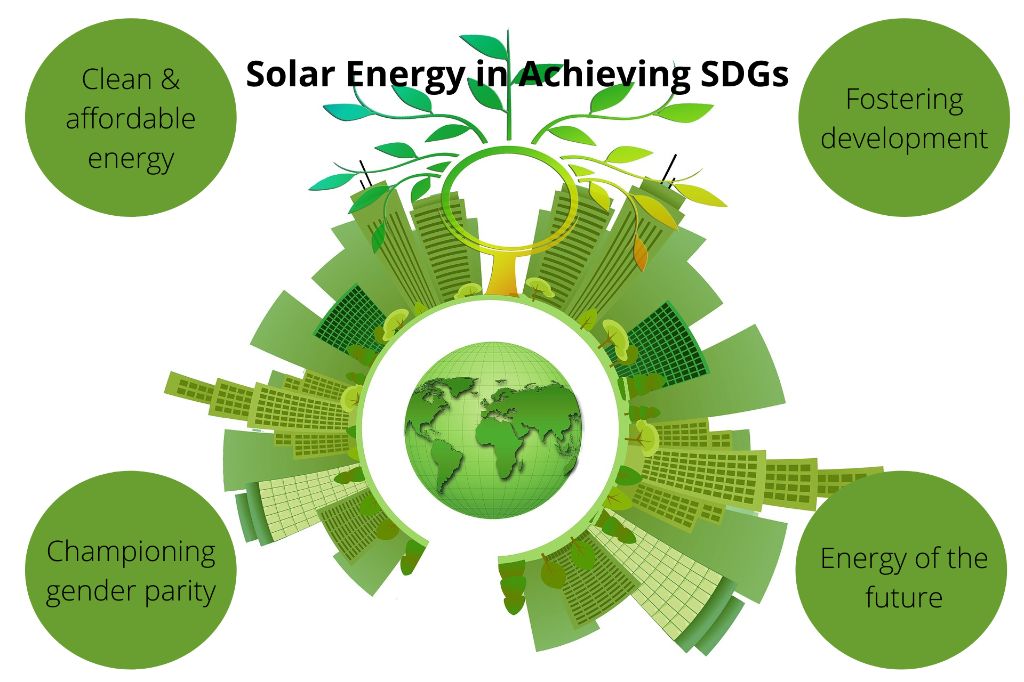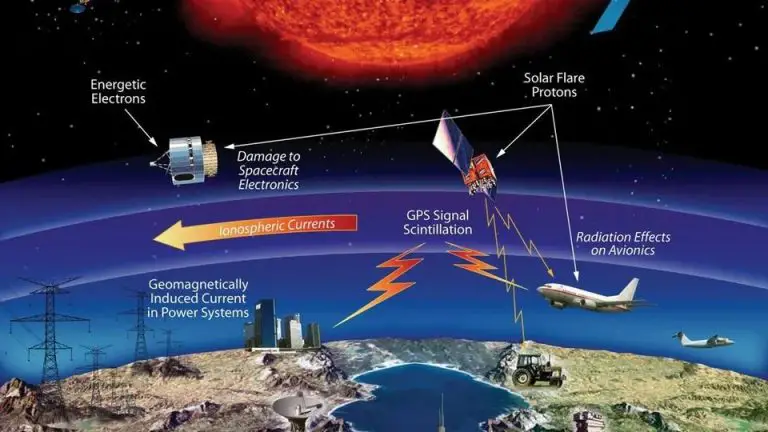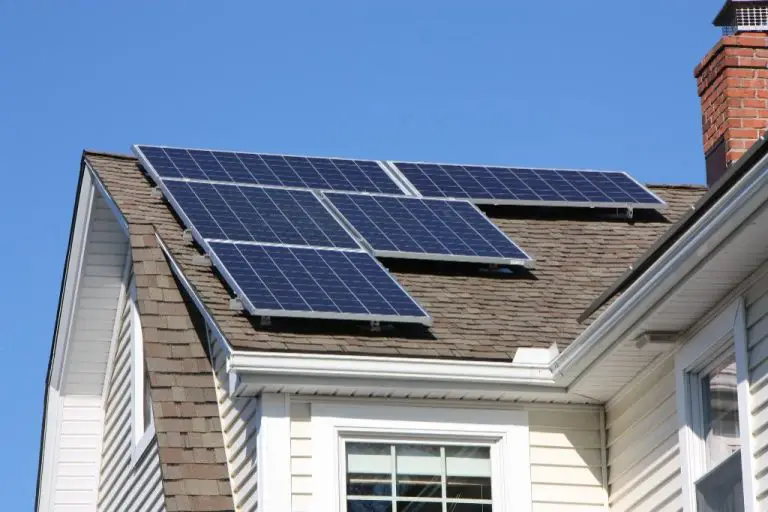Is Solar Energy Economically Sustainable?

Solar energy is the radiant energy produced by the sun, which can be converted into thermal or electrical energy. Economic sustainability refers to practices that support long-term economic growth without negatively impacting the environment or depleting natural resources. In the context of energy, economic sustainability requires affordable, reliable energy that does not compromise the ability of future generations to meet their own needs.
This article will examine whether solar energy is an economically sustainable solution for energy production by evaluating solar energy costs, incentives, lifetime savings, grid parity, future innovations, environmental benefits, job creation potential, and remaining challenges. Analysis will determine if solar technology can provide affordable, clean energy over the long-term.
Current Costs of Solar
The upfront cost of installing a residential solar panel system in the U.S. today ranges between $15,000-$25,000 for an average-sized system of around 6 kW. According to NerdWallet, the national average cost to install solar panels falls between $18,000-$36,000. However, costs can vary significantly based on system size, location, available sun exposure, and roof type.
For a typical home, the cost for solar comes out to around $2.50-$4.50 per watt. So a 6 kW system would cost $15,000-$27,000 before incentives. The wide range is due to differences in equipment, regional labor costs, permits, and site prep needs.
According to EnergySage’s 2021 Solar Marketplace Intel Report, the median price to install a 6 kW solar system is about $18,600. This factors in the 30% federal tax credit available today.
Solar Incentives and Savings
There are several financial incentives available that can reduce the upfront cost of going solar for homeowners. The most significant is the federal solar Investment Tax Credit (ITC). The ITC offers a 26% tax credit for systems installed in 2020-2022, and 22% for systems installed in 2023 [1]. This credit applies to both home and business owners, and there is no limit to the credit amount. The ITC has helped solar installations grow by over 10,000% since it was implemented in 2006 [2].
Many states and utilities also offer additional rebates and savings on top of the federal ITC. Net metering policies allow solar customers to get credit for excess energy sent back to the grid. This can lead to zero dollar energy bills each month. Overall, combining incentives like the ITC with net metering and local rebates can reduce the cost of a solar system by 50-75%.
Lifetime Savings
When considering a solar investment, one of the most important factors to consider is the lifetime cost savings from solar. According to a report from EnergySage, the average homeowner can save between $20,000 and $96,000 over the 25-30 year lifetime of a solar system, depending on local electricity rates (Source). This amounts to $40,000-$128,000 in savings for the average home, according to Forbes (Source). These savings are realized through offsetting high utility costs with solar energy production.
To calculate lifetime savings, you first need to determine the estimated annual electricity production from the solar system based on its size and your location’s solar resource. This is then multiplied by the utility rate per kWh in your area to get the annual savings amount. Over a 25-30 year lifespan, these annual savings really add up, especially as utility rates continue rising over time.
In addition to offsetting current electricity costs, solar systems can lock in electricity rates, protecting homeowners from potentially significant utility rate hikes over the system’s lifetime. This hedging can greatly increase the long-term savings solar provides. With incentives like net metering, which credits excess solar generation back to the homeowner, the savings are even greater.
When weighing the upfront investment in solar panels, it’s important to consider the total lifetime savings to understand the complete financial picture. For most homeowners, solar provides substantial long-term savings that make the system very economically attractive.
Grid Parity
Grid parity means that the levelized cost of electricity from solar photovoltaics is equal to or less than the price of buying power from the electricity grid.[1] This is an important milestone, because when solar reaches parity it becomes a financially viable energy source without subsidies or incentives. Many parts of the U.S. have already reached grid parity thanks to declining PV costs and increasing electricity rates.[2] For example, this grid parity map shows most states in the southwest have hit parity, with more states reaching it each year.[3] As solar costs continue to fall and electricity rates rise, grid parity will spread to even more areas, making solar power ever more economically sustainable.
Future Cost Reductions
The cost of solar panels is projected to continue decreasing in the coming years. According to CNET, solar panel prices have dropped from around $50,000 for an average residential system just 10 years ago to around $15,000-$25,000 today (source). This is thanks to declining material costs as well as efficiency gains. Experts predict solar panel prices will fall further as technology improves and solar continues to scale. One forecast estimates an average annual decrease of 5% in solar panel pricing through 2024 (source). Federal incentives in the U.S. like the recent Inflation Reduction Act are also expected to accelerate cost reductions by spurring greater demand. The downward price trend is likely to persist, making solar increasingly cost competitive.
Environmental Benefits
One of the most significant benefits of solar energy is its ability to reduce greenhouse gas emissions and fight climate change. Solar panels produce clean, renewable electricity without releasing any carbon dioxide or other pollutants into the atmosphere. According to Columbia University, solar panels reduce CO2 emissions more per acre than trees and much more than corn ethanol (1). Specifically, solar panels can offset over 100 tons of CO2 emissions per acre per year, which is around 10 times more than an acre of trees (1).
On an individual home basis, each kilowatt hour of electricity produced by solar panels results in a reduction of emissions from traditional fossil fuel-based electricity generation. One source estimates that each kWh from solar avoids 0.5 to 1 pound of CO2 emissions, though the exact amount depends on your region’s electricity grid (2). For a typical 5 kW residential system that might produce 6,500 kWh per year, this results in an annual emissions reduction of 3 to 6.5 tons of CO2 (2).
When scaled up to the utility level, solar power plants can make an even bigger emissions impact. One analysis found that a 1 MW solar power plant can reduce CO2 emissions by around 1,500 tons per year (3). As solar continues to expand its share of electricity generation, it will play a major role in reducing greenhouse gas emissions and combating climate change.
Sources:
(1) https://news.climate.columbia.edu/2022/10/26/solar-panels-reduce-co2-emissions-more-per-acre-than-trees-and-much-more-than-corn-ethanol/
(2) https://www.bostonsolar.us/solar-blog-resource-center/blog/how-much-co2-do-solar-panels-save/
(3) https://www.solnet.group/blog/this-is-how-much-a-solar-power-plant-reduces-co2-emissions
Job Creation
The solar industry has experienced rapid job growth in recent years. According to the US Solar website, the company currently has over 600 open positions to help expand access to community solar projects. Job sites like Indeed and LinkedIn also show numerous job openings at solar companies across the country.
The solar industry as a whole employed over 250,000 Americans in 2020, representing an increase of over 5% from the previous year according to the National Solar Jobs Census. As solar energy continues to expand its share of electricity generation, even more solar jobs are expected to be created. This job growth provides economic benefits to local communities and helps drive the transition to renewable energy.
Challenges
Solar energy faces several challenges that need to be addressed for it to reach its full potential. Some of the main challenges include:
Intermittency: The amount of sunlight that hits solar panels varies throughout the day and year. Solar only produces energy when the sun is shining, so energy storage is important for times when sunlight is limited (The Advantages and Disadvantages of Solar Energy).
Storage: Currently, storing solar energy for use when the sun isn’t shining is expensive. Better and cheaper energy storage technology is still needed (The Dark Side of Solar Power).
Regulations: Rules, regulations, and policies surrounding solar vary significantly between jurisdictions. Navigating regulations and policies across federal, state, and local levels can be complex and time-consuming (Advantages & Disadvantages of Solar Energy).
Conclusion
In conclusion, the economic sustainability of solar energy depends on several factors. Overall, as solar technology continues to improve and costs continue to fall, solar is becoming increasingly cost-competitive with conventional energy sources. In many cases, the lifetime savings from reduced electricity bills can offset the upfront installation costs of solar panels within 5-10 years. As solar reaches grid parity and economies of scale further reduce costs, solar is expected to become economically sustainable without subsidies in most markets within the next decade. The environmental benefits of solar are an added plus. While solar still faces challenges around intermittency and storage, innovations in battery technology are helping address these issues. With sensible policies and continued adoption, solar energy appears poised to play a major role in the sustainable energy mix of the future.




